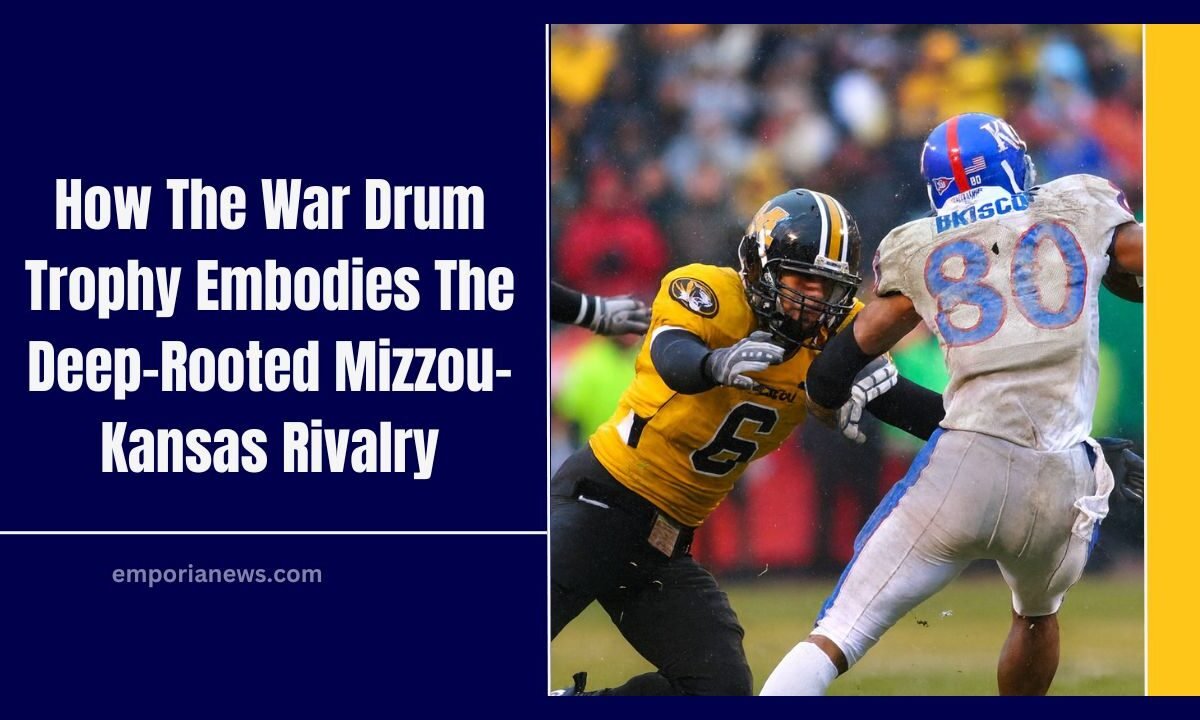When the Mizzou Tigers and Kansas Jayhawks clash—first established in 1891—they reignite one of the most storied college football rivalries west of the Mississippi.
Beyond school pride, this rivalry comes with tangible heritage: the war drum, a historic trophy steeped in tradition, conflict, and transformation, serving as a powerful symbol of the states’ fraught past.
Civil War Origins & Rivalry Roots
The rivalry stems from the Civil War, where Missouri’s “Border Ruffians” and Kansas’s “Jayhawkers” engaged in violent territorial disputes.
Over time, these hostilities transferred into the football arena, adding deep emotional resonance to games between the two universities. The war drum trophy made that emotional connection physical and ongoing.
The Birth of the War Drum Trophy
In 1935, alumni from both universities in Kansas City acquired a Native American-style tom-tom drum from a pawn shop.
Intended as a symbol and trophy of the rivalry, the drum became known as the Indian War Drum, awarded annually to the football game winner to fuel fan passion and rivalry fervor.
Legacy Transitions and Trophy Evolution
| Era | Development |
|---|---|
| 1935–1980s | Original Indian War Drum awarded annually; symbol of rivalry heritage. |
| 1980s | Trophy deteriorated, eventually misplaced—but later rediscovered in storage. |
| 1980s–1990s | New drum commissioned from Taos craftspeople, restoring tradition. |
| 1999 | Replaced with modern bass drum at Kansas’s request; kept by Missouri alumni. |
| 2000s | Renamed “Marching Band Drum Trophy,” reflecting lighter rivalry tone. |
| 2001 | Mizzou won final game with war drum; earned permanent possession. |
| 2004 | Rivalry officially rebranded as the Border Showdown amid national sensitivities. |
| Present Day | Bass drum still resides with Mizzou team; physical exchange continues game-day. |
From Trophy to Tradition
Although the original war drum fell into disrepair and was stored away, it wasn’t forgotten. A faithful reproduction crafted by Native artisans sustained the tradition, while the updated bass drum—introduced at Kansas’s request in 1999—continues to be exchanged.
Today, the bass drum, adorned with both schools’ logos, is held and paraded by the winning team on game day, maintaining the rivalry’s symbolic heartbeat.
Modern-Day Significance
- The trophy’s continued exchange feeds the rivalry even as Mizzou shifted to the SEC and Kansas stayed in the Big 12, making future meetings non-conference events.
- Fans and players alike embrace the historical resonance the drum carries—from representing Civil War-era divisions to modern-day competitive spirit.
- The rivalry remains one of college football’s most enduring, with Missouri leading in series wins. Revivals of the match-up—like the one starting in 2025—bring renewed energy and attention to the trophy’s legacy.
The war drum trophy transcends a simple sports reward—it’s a living relic of history, carrying echoes of Civil War enmity, Depression-era traditions, and modern college football rivalry.
From its pawn shop origins to its ceremonial presence on the field today, the drum encapsulates everything at stake when Mizzou and Kansas meet.
As the rivalry returns to the gridiron, the trophy stands ready to remind both schools—and the fans—just how deep soccer rivalries can resonate.




